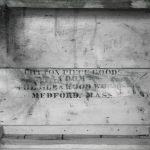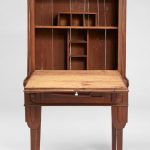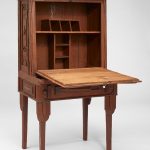From your colleague Mary Ann Wark, some information received from a friend who is a dancer and videographer of dance, on the background of Martha Graham, in connection with the portrait by Marisol currently on display:
Thumbnail Dance History in America:
From the mid-1800s to the early 1900s, European dance companies came to America, bringing the stylized ways of moving that you are familiar with, and lots of “story ballets” (“Cinderella,”
“Sleeping Beauty,” “The Nutcracker.”) Lots of fancy costumes, sets, orchestras, etc. Later on, starting in 1916, Serge Diaghilev brought his famous Ballet Russe, which included stars like Nijinsky, Pavlova, and later George Balanchine (founder of the New York City Ballet in NY). He also commissioned modern artists like Picasso, Stravinsky, etc. to create sets and music for the ballets.
In the early 1900s Isadora Duncan burst onto the scene, with her emphasis on naturalism and freedom of movement. Lots of tunics, bare feet. (She was more popular in Europe than here. We were too much of a Puritan culture).
Then came Ruth St. Denis and Ted Shawn in 1915, who drew heavily on other cultures and “the exotic.” Camp and Kitsch take a whole new level, but they WERE sincere…
And then came our girl, Martha Graham. Born on May 11, 1894 in California and died April 1, 1991 (aged 96) in New York. Her father was a physician who was rather unusual because he also considered his patients psychological states when he was treating them. From him Martha got several key tenets, such as “Movement never lies.”
Martha Graham: Early History
As a teenager, Graham joined the Denishawn company. She left in 1923 after 7 years, and starting choreographing. She created her company(all women in the early years) and her own technique (which is still recognized) and known for its sharp angles, jagged designs and LOTS of contractions, especially in the torso. Her main themes dealt with human conflicts and emotions, drawing heavily on Greek myths (“Medea,” “Errand into the Maze”).
Graham became on of the “Four Pioneers” of Modern Dance in America in the. 1930’s. The others were Doris Humphrey/CHarles Weidman (much more lyrical work, “Fall and Recovery”) and the German-born and trained Hanya Holm (the original Nancy Hauser here was a big disciple of Hanya Holm). Graham was the major influence of choreographers like Merce Cunningham and Erick Hawkins (who ultimately broke away from her aesthetic and found their own).
Graham was a genius and her major contributions to the dance field have been compared to Picasso(for painting), Stravinsky (music) and Frank Lloyd Wright (architecture). She gave modern dance a new depth for showing primal emotions.
She worked closely with Noguchi on sets.
If you want a good, condensed biographical overview of Martha Graham, google
Martha Graham” and click on the Pitt~gillis>dance>Martha website.
Martha Graham: More than a woman locked in a wooden sculpture
The thing that is REALLY important to me, for your docents to convey, is what an extraordinary choreographer and dancer Graham was (Maybe show a short excerpt of her own an iPad?) One of the major dance photographers, a woman named Barbara Morgan, took incredible photos (just google her and you’ll see). One of the most famous is a photo from “Letter to the World,” a dance about Emily Dickinson. (There is a great story how Morgan never took pictures in performance. She would go watch rehearsals when Martha was creating, then she would go home to Scarsdale and when certain images rose to her consciousness which were the “essence” of the piece, she would call Martha and arrange a shoot for just those segments. In fact, capturing the “essence” of things was of ultimate importance to Morgan. But I digress.
The Work with Marisol:
OK. This is what you’ve been looking forward to hearing. There was a series called “Great Performances: Dance in America” that began in 1974 but was ultimately folded into “Great Performances” . The Graham program was broadcast April 7, 1976. (Lots of other major companies were featured over the run of the programs as well).
If you google “Martha Graham’s Diversion of Angels” you will see her introducing that dance as she sits in a chair that looks very much like the Marisol one. You can also google “Collaborations between Marisol and Martha Graham. “ (Marisol did the sculpture a year later in 1977. She also did sculptures of Georgia O’Keefe, Picasso, John Wayne and Andy Warhol sitting as block figures in chairs. She liked to show them “Older” (and wiser?), as opposed to the American passion with everyone being young.
The portrait is especially poignant as Martha Graham was crippled by arthritis at the end of her life.


